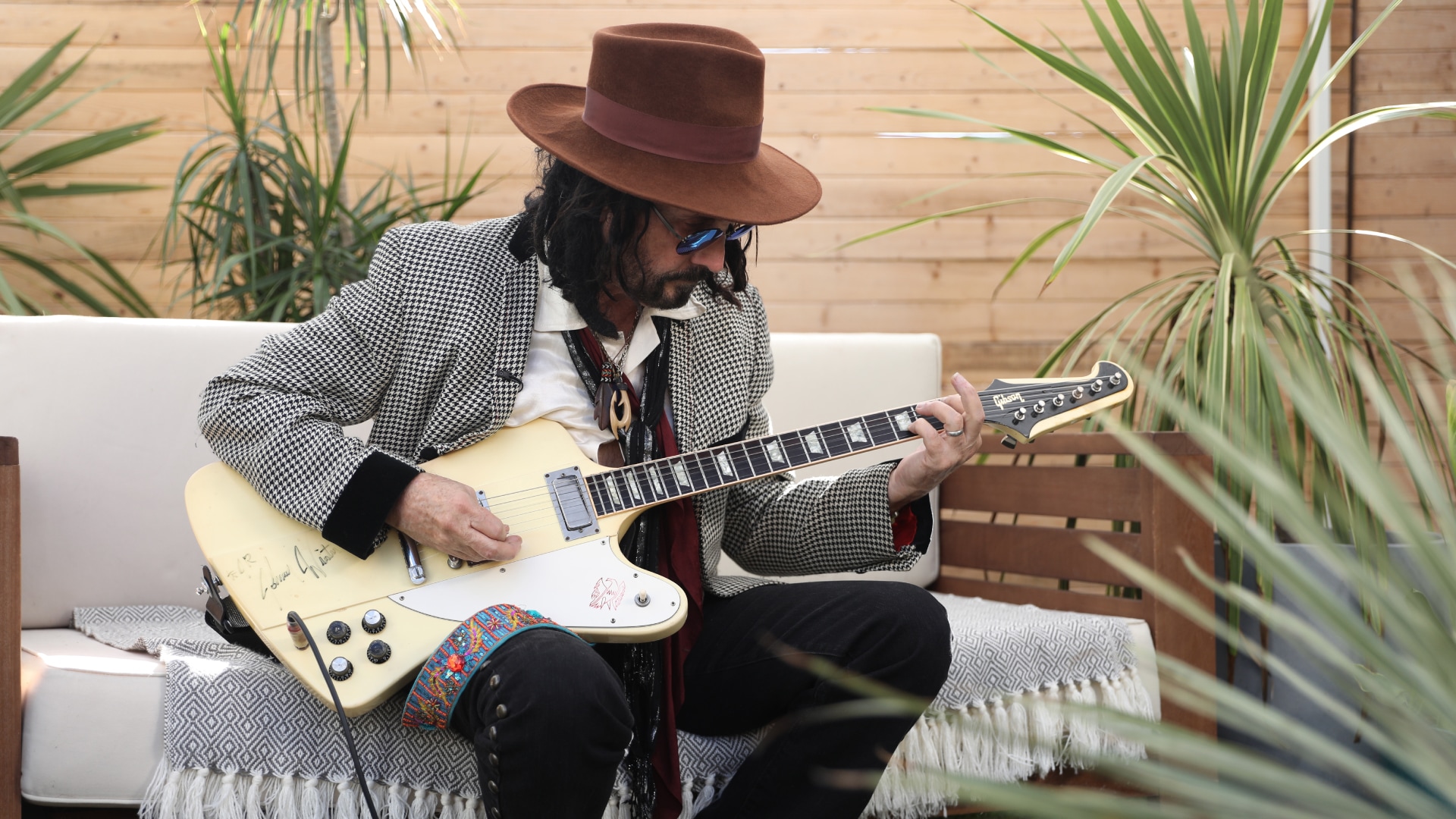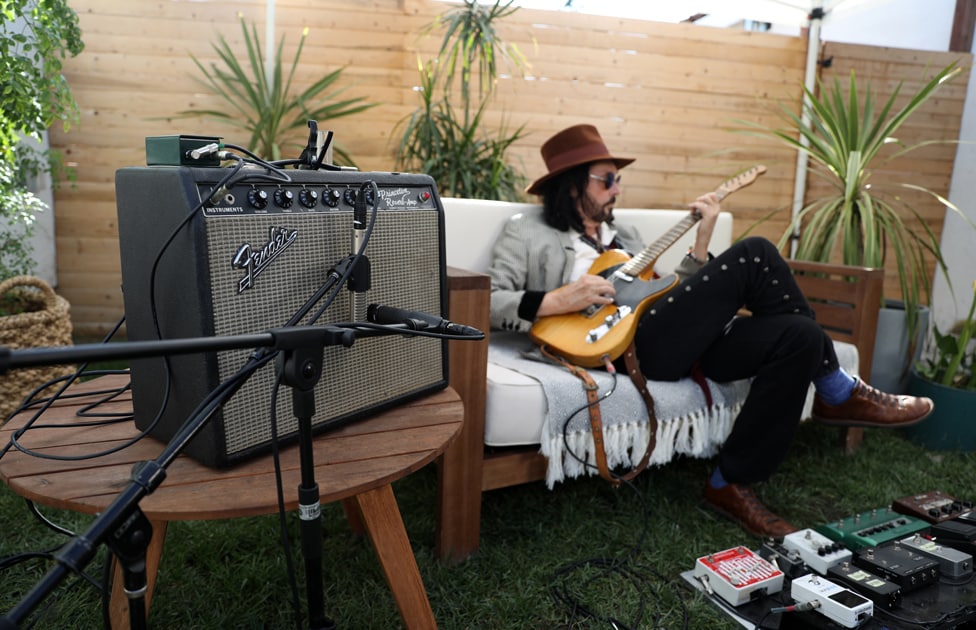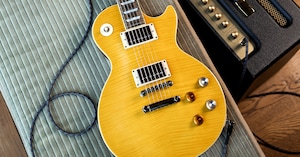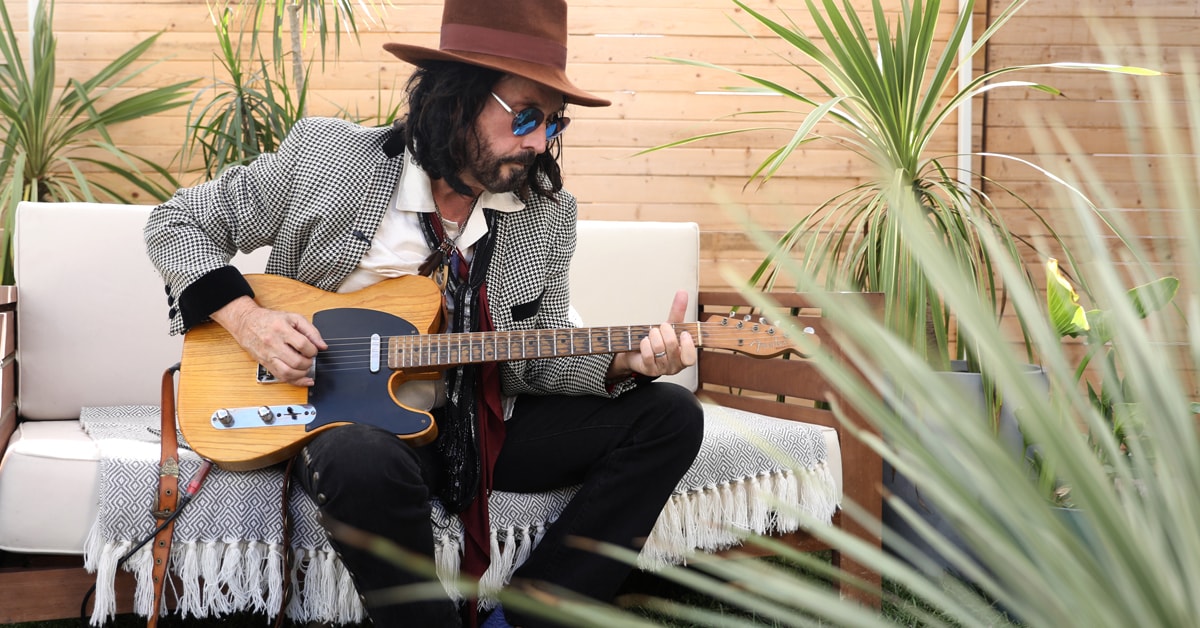Guitarist Mike Campbell spent four decades as Tom Petty's co-captain, co-writing hits like "Refugee," "Runnin’ Down a Dream," and "Here Comes My Girl." The Florida-born musician also co-wrote "Boys of Summer" with Don Henley, "Stop Draggin' My Heart Around" for Stevie Nicks, produced Roy Orbison, recorded with Bob Dylan, and in 2018, became a member of Fleetwood Mac. We sat down with Campbell to geek out about his favorite guitars, including a 1950 Fender Broadcaster, 1959 Les Paul Standard and a $500 pawn shop Gibson Firebird. He spoke of his vulnerability writing songs without Petty, the joy of his new band, The Dirty Knobs, and how Van Morrison inspired the group's single, "Irish Girl."
The songs you wrote with Tom Petty helped the Heartbreakers sell over 80 million albums. What's your process as a songwriter?
There's no formula. But I’ve thought about this a lot, because I’m really fascinated with the mystery of songwriting. The inspiration, it’s like a switch—it can come from anywhere. It could be I hear somebody say something and then I run to the studio. I’ve got this little idea of a word, or I might be listening to a record. Maybe I’ve heard it a million times before by an old band that I love, and a chord will go by, and I’ll go, “I wonder what that chord is?” I’ll go pick up the guitar and then the switch comes on and you're off. Songwriting is kind of like that for me. It’s just in the air, and you're just hoping for the switch to turn on, and it turns on when it wants to. I can’t just force it. Some people can, I guess, but not me. I wait for that muse to happen, and I just follow it.
How do you create guitar parts that are just as memorable as the lyrics and melody?
Well, it’s magic. It’s luck. A good example would be the song “Breakdown” on our first album. Tom had written it on piano. We cut the song, and somebody said, “Why don’t you play some lead guitar on it?” This is near the end of the night, so I just started noodling. I was playing with a slide and didn’t think much about it. I went home that night, and they called me an hour later and said, “You've got to come back down to the studio. You played a lick at the end of the song that we have to put at the beginning, because I think it’s a hook.” That's just luck when that happens. It comes from some mysterious place.

What was it like having such a creative partnership with Tom?
Well, you know, there's nothing like it, really. I was so lucky to have Tom as my collaborator for 40 years. I did a few things outside the band. But basically, any music that I would come up with, I would take it to my partner. Say you have this little germ of an idea, and you're not sure about it. You show it to someone who’s really talented, and they take it, and they go, “Well, how about this?" It just becomes this timeless thing—it's kind of mind blowing. We had that relationship.
Have you found that kind of relationship with anyone else?
I’ve written with other people, but over the years, I’ve never sat down with somebody eyeball to eyeball and tried to write. I'm not real comfortable with doing that, although recently, I did with Chris Stapleton. We spent a couple of days together and wrote some songs together. I found that this is something I think I could enjoy doing—throwing out ideas side by side rather than doing it all on my own. I really enjoyed that process, but it’s a new process to me. Writing is very personal, almost like being naked, and it’s easier to be naked when you're by yourself.
Do you do most of your writing on guitar?
Yeah. Guitars are great that way. Almost every time I’ve gotten a new guitar and get it home, I’m so excited to play it that it inspires a song. Certain guitars, songs just come out of them. A lot of times I’ll pick up a different guitar from day to day just to see where that takes me. The guitar will sometimes direct which way the song might go.
You own the Holy Grail of guitars—a 1959 Les Paul Standard Sunburst. Why is it special to you?
This guitar represents a lot of records I grew up on, like Jimmy Page, Led Zeppelin, Eric Clapton and Jeff Beck. Those great players that inspired me use this same model guitar, and they’ve become ridiculously expensive. I was lucky to get this one, because a friend of mine has a guitar store. He brought it over to my house and said, “I think you’ll like this one.” And I fell in love with it. We were starting an album called Mojo with the Heartbreakers, and I brought it into the rehearsal. We started playing, and Tom lost his mind. He said, “That's a great sounding guitar. I want you to play it on every song on this album. We’re going to make this album around the sound of that guitar.” And we did. The new Dirty Knobs record, Wreckless Abandon—90% of it is this guitar, too, because it’s big, and it fills out the sound for a four-piece band.

What's the story of The Dirty Knobs?
The Dirty Knobs started out as a side project between Heartbreakers tours for me to just keep my chops up and have fun. We started playing around L.A., concerts that did not have hits in the set, just songs you never heard before … but we were going to make it work and pull you in. I love that challenge. And the band just got better and better. I was always planning to do something with them; unfortunately, things worked out the way they have now, but here I am, so it’s my main focus right now. I love this band.
The new single is "Irish Girl." What was the inspiration behind the song?
I was driving home one day, and I had the radio on. There was a song by Van Morrison and Them. I thought it had a great groove—a great ambiance. When I got home, I took the guitar out, and I tried to find that feel. I don't know where the character came from, but there's this girl, and she’s following this guy who went to London. It was coming from the song that I had heard on the radio, so it became the “Irish Girl.” The lyrics on this song, they’re more poetic than most of the record. I was reading some poetry books at the time. That's where it came from—I was just lucky that night. It just came.
The artwork for Wreckless Abandon is mysterious and surreal. Who designed it for you?
The cover was done by a fella named Klaus Voormann, who had a connection with The Beatles. He did the Revolver album for them, and he played bass on a lot of John Lennon’s solo stuff. My assistant, who is a German girl, used to work for him. When we were thinking about artwork, she said, “Just call Klaus. He might do it.” We sent him the record, and he loved it and said, “Sure." I’m really proud of what he did, and I’m really proud to have his name on it, too, because I’m a Beatle nut.
I make music because it fulfills my soul. The most a musician can hope for is to inspire somebody else and then you've done your job. It feels like you're doing something good in the world.
You've been an artist for over five decades. How do you find the motivation to keep creating?
It’s just passion. The fire was lit in me at a young age. I was inspired by the bands from the ’60s, never dreaming that I would ever really be a record maker, or actually meet and work with some of those people. It’s blown my mind. In my lifetime, I’ve been so blessed. But I know if I had never made a record, if I couldn't make a penny, I’d still do it, because I have to. I don't know how to describe it. It’s like you have to love your child, because you do. And I have to love music, because I do. I’ll always love it.
At the end of the day, what do you want people to take away from your music?
Most of the music I’ve done, the songs that we wrote, even though they may have dark, mysterious, shadowy themes here and there, there was always redemption and hope that life can be better. At the end, love is the answer. What I would hope that our music would do for someone is make them feel like life is okay. There's hardships, but this music, this moment, these words, make me feel happy inside, and make me feel like it’s worthwhile. I think that's the bottom of it. That's what it’s all about.
Keep up with Mike Campbell on the Dirty Knobs official website and his Instagram.




